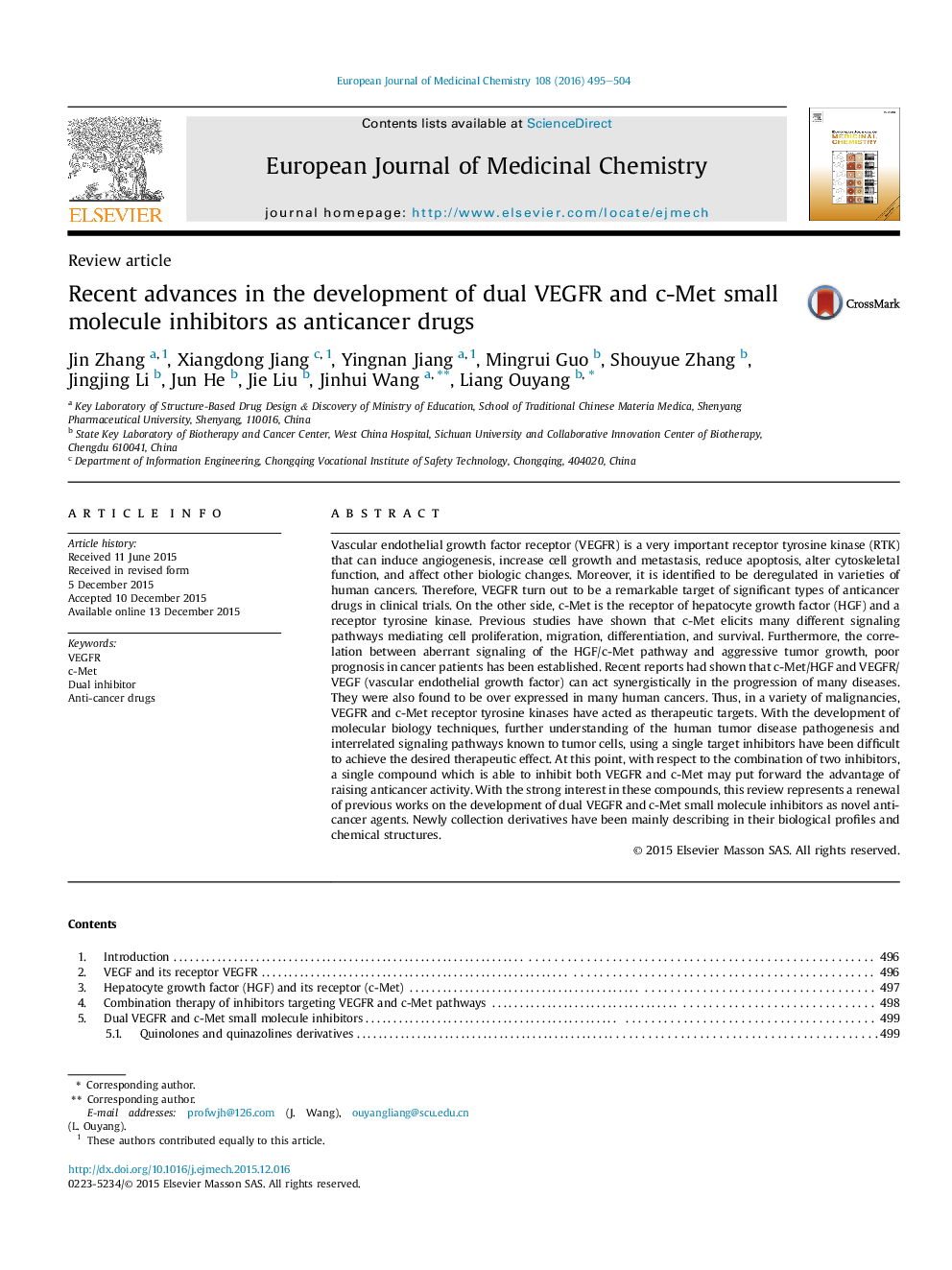| Article ID | Journal | Published Year | Pages | File Type |
|---|---|---|---|---|
| 1393828 | European Journal of Medicinal Chemistry | 2016 | 10 Pages |
•The structures and biology of VEGFR and c-Met have been described.•Role of HGF/c-Met and VEGF/VEGFR in tumor signaling have been discussed.•Some small molecule inhibitors of c-Met and VEGFR have been illustrated respectively.•This review also includes data regarding dual VEGFR and c-Met small molecule inhibitors.
Vascular endothelial growth factor receptor (VEGFR) is a very important receptor tyrosine kinase (RTK) that can induce angiogenesis, increase cell growth and metastasis, reduce apoptosis, alter cytoskeletal function, and affect other biologic changes. Moreover, it is identified to be deregulated in varieties of human cancers. Therefore, VEGFR turn out to be a remarkable target of significant types of anticancer drugs in clinical trials. On the other side, c-Met is the receptor of hepatocyte growth factor (HGF) and a receptor tyrosine kinase. Previous studies have shown that c-Met elicits many different signaling pathways mediating cell proliferation, migration, differentiation, and survival. Furthermore, the correlation between aberrant signaling of the HGF/c-Met pathway and aggressive tumor growth, poor prognosis in cancer patients has been established. Recent reports had shown that c-Met/HGF and VEGFR/VEGF (vascular endothelial growth factor) can act synergistically in the progression of many diseases. They were also found to be over expressed in many human cancers. Thus, in a variety of malignancies, VEGFR and c-Met receptor tyrosine kinases have acted as therapeutic targets. With the development of molecular biology techniques, further understanding of the human tumor disease pathogenesis and interrelated signaling pathways known to tumor cells, using a single target inhibitors have been difficult to achieve the desired therapeutic effect. At this point, with respect to the combination of two inhibitors, a single compound which is able to inhibit both VEGFR and c-Met may put forward the advantage of raising anticancer activity. With the strong interest in these compounds, this review represents a renewal of previous works on the development of dual VEGFR and c-Met small molecule inhibitors as novel anti-cancer agents. Newly collection derivatives have been mainly describing in their biological profiles and chemical structures.
Graphical abstractFigure optionsDownload full-size imageDownload as PowerPoint slide
